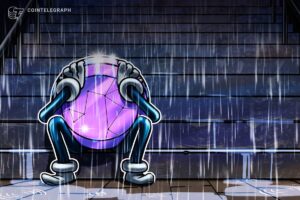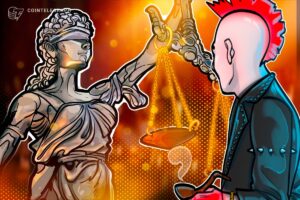worthless fad or Web3’s future?

In March 2021, crypto entrepreneur Sina Estavi made headlines globally when he spent $2.9m on a non-fungible token (NFT) of the first tweet from the former Twitter boss Jack Dorsey. Fast forward to 2023 and
The Guardian and other platforms are reporting that “researchers estimate 23 million people hold worthless investments” in these digital tokens.
In recent years, you may have heard the buzz surrounding NFTs, or non-fungible tokens. They’ve taken the art, entertainment, and digital world by storm, leaving people intrigued, confused or sceptical. This blog post delves into what NFTs are, how they’re
already a part of our lives, debate their value, and discuss their potential to reshape the digital landscape.
What are NFTs?
NFTs, or non-fungible tokens, are unique digital assets that represent ownership of a specific item, piece of content or collectible on the blockchain. It’s their collectible nature that has seen these assets to ‘viral’ in the news, such as the 2021 NFT
collection by the former first lady called Melania’s Vision which
included a limited edition digital artwork of her eyes.
Unlike cryptocurrencies such as Bitcoin or Ethereum, NFTs are not interchangeable for one another – each token has a distinct value and cannot be replicated or divided. This uniqueness is a key feature that sets NFTs apart.
While NFTs aren’t a cryptocurrency themselves, most of them are hosted on the Ethereum network.
NFTs in disguise: more common than you think
Surprisingly, you might already be interacting with NFTs without even realising it. Digital concert tickets, for example, are often issued as NFTs, providing fans with proof of ownership and authenticity. This very subtle integration showcases how NFTs are
quietly becoming part of our daily lives, enabling secure and verifiable ownership of digital goods.
But are they worth anything?
Opinions around NFTs are polarised even amongst seasoned crypto investors…
Some argue that they are a fleeting trend and destined to be worth nothing. A recent
Toms Hardware headline read “NFT Hype Collapse Means 95% of The Digital Assets Are Now ‘Worthless’”; while according to a new
report by dappGambl that reviewed data from NFT Scan and CoinMarketCap, 69,795 out of 73,257 NFT collections have a market cap of 0 Ether, leaving 95% of those holding NFT collections – or 23 million people
– with worthless investments. (The Guardian).
While stats like that sound like the end for NFTs, context is important. When you have a creative platform with no barriers to entry, there’s going to be an immense volume of content created, and most of it won’t hold value. I would guess that 95% of the
world’s websites don’t get any visitors – but that doesn’t mean the web (or the other 5% of sites) is worthless.
The world’s biggest NFT marketplace – OpenSea – hosts trades valued at an average $80 million monthly; and CryptoPunks (pixelated characters) were originally given away for free, but now sell for millions. One CryptoPunk character recently sold for $11.7
million.
Web3’s revolution: beyond art and collectibles
There are also those who view NFTs as a pivotal part of Web3, the decentralised, blockchain-based internet of the future. NFTs are not limited to digital art; they are expanding into diverse use cases like ‘Soulbound Tokens’ which can represent our identities
in virtual worlds.
In these virtual environments, NFTs provide ownership and scarcity, allowing players to buy, sell and trade digital items and land. Although complex, this concept has the potential to fundamentally revolutionise gaming, virtual reality and digital economies.
In virtual worlds like Decentraland and The Sandbox, digital land parcels have been sold for astonishing amounts, with some going for over a million dollars.
Navigating the NFT Landscape
Regardless of where you stand on the NFT spectrum, it’s undeniable that they’re making waves in the very ‘real’ world of digital assets. High-profile NFT sales have garnered significant attention worldwide, with artworks collectibles and virtual real estate
fetching millions of dollars.
dappGambl’s research concludes that despite the volatility of the NFT market, researchers believed NFTs still have a place in the future but that “In order to survive market downturns and have lasting value, NFTs need to be either historically relevant such
as first-edition Pokémon cards, true art or provide genuine utility, they said in the report.” (The Guardian)
For now, perhaps it should be ‘Not sure; Future will Tell…’
The debate surrounding NFTs is far from settled. While some argue that NFTs may lose their value, others see them as the future of digital ownership and transactions in Web3.
Whether NFTs are a worthless fad; or the cornerstone of the digital future, they are undeniably shaping the way we interact with and value digital content and assets. Prudent investors would do well to treat them like any other asset class: stay informed
and learn about this evolving technology. This includes keeping an open mind, exploring novel use cases and carefully assessing the risks and rewards associated with these unique digital assets.
The NFT revolution is still in its early stages, and its true potential (if any) is yet to be fully realised.
Disclaimer: Crypto is volatile, carries risk and the value can go up and down. Past performance is not an indicator of future returns. Please do your own research.
Source link
#worthless #fad #Web3s #future





